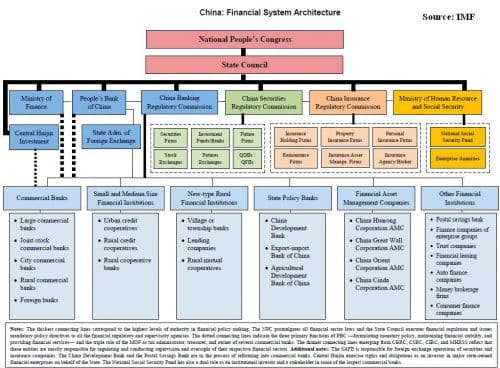Chart of the Day: China’s Financial Architecture
Here’s what we will be reading over the holiday, Red Capitalism: The Fragile Financial Foundation of China’s Extraordinary Rise, which Bloomberg named as one of the top business books of 2011. Our sense is China’s financial sector will be on everybody’s radar by the middle of 2012. Untangling and understanding it — if that is possible — and identifying where the bad debts are held could return big divies in the coming new year.
Add Paul Krugman to the list of those now expressing concern about China’ falling real estate market,
Do we actually know that real estate was a bubble? It exhibited all the signs: not just rising prices, but also the kind of speculative fever all too familiar from our own experiences just a few years back — think coastal Florida.
And there was another parallel with U.S. experience: as credit boomed, much of it came not from banks but from an unsupervised, unprotected shadow banking system. There were huge differences in detail: shadow banking American style tended to involve prestigious Wall Street firms and complex financial instruments, while the Chinese version tends to run through underground banks and even pawnshops. Yet the consequences were similar: in China as in America a few years ago, the financial system may be much more vulnerable than data on conventional banking reveal.
Now the bubble is visibly bursting. How much damage will it do to the Chinese economy — and the world?
That is our homework assignment over the holiday. Getting it right will determine 2012’s investment and trading returns, in our opinion.
We leave you with an excellent flowchart and table from the IMF explaining China’s financial architecture.

Comments are closed.